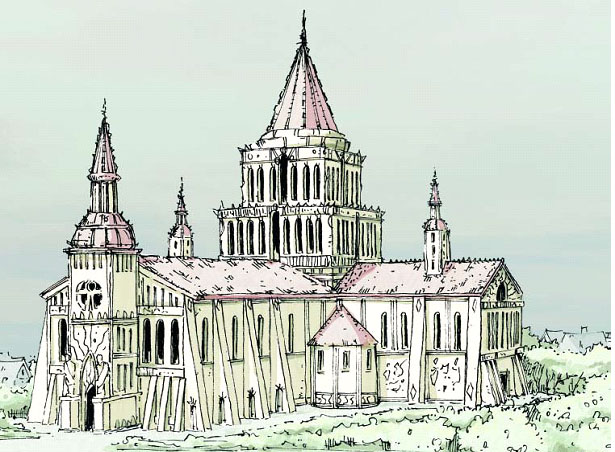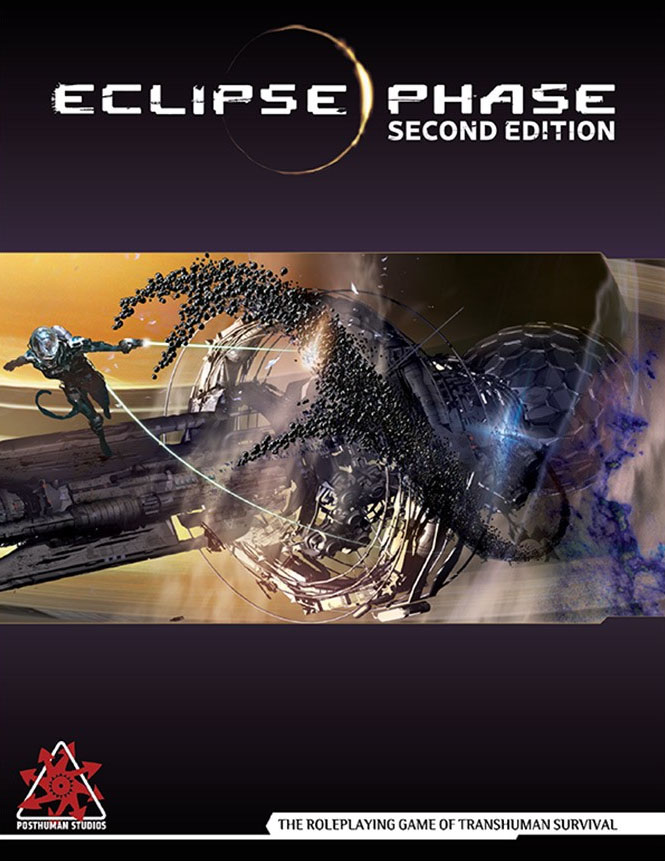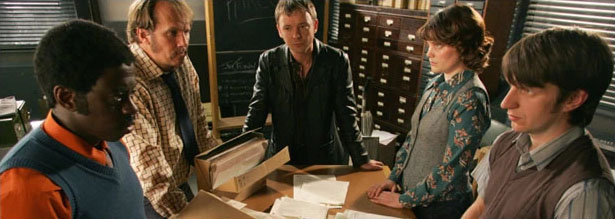Agnarr beamed: “A dog!” He caught it deftly in his hand.
The dog continued struggling, trying ineffectually to claw and bite at Agnarr. It also continued its shrill barking: Yip! Yip! Yip! Yip! Yip! Yip!
Tee grimaced. “Agnarr…”
Yip! Yip! Yip! Yip! Yip! Yip!
“It’s a dog! Not a real dog… but a dog!”
Yip! Yip! Yip! Yip! Yip! Yip!
Tee grabbed the dog from Agnarr’s hand and smashed it to smithereens on the floor. Agnarr’s face fell…. but at least the incessant yipping stopped.
Arguably the most powerful and memorable moments you will experience at a gaming table are those in which a PC faces a crucible of character: Where the outcome of a particular moment will not only change the direction of future events, but will in a very meaningful way rewrite who the character is on a fundamental level.
Often these moments will blindside you: You won’t even realize the significance of what’s happening until you’re abruptly in the moment and the dial has suddenly cranked up to 11.
And in some cases you may be sitting at the same table — or even running the game — and not realize that a character crucible is happening right next to you until long after the fact. This is because, during a roleplaying session, everyone has a unique and privileged view of the game: As a GM, I am gifted with near-omniscience and can see all that is happening from a vast perspective. But each player is given the exclusive ability to experience what’s happening inside the head of their character.
Take, for example, this yipping dog.
At this point in the campaign, it had become a running gag that Agnarr (a) wanting a dog and (b) could not find a goddamn dog. Speaking of the unique path of actual play, this running gag was not planned: It emerged organically because every time Agnarr would go looking for a stray dog in Ptolus he could completely flub his Animal Handling check. (Hence the quote at the end of Session 20A: “It’s like there are no damn dogs in this entire city!”)
That brings us to Pythoness House, where the PCs find a porcelain dog that was put there by Monte Cook:
Six of these statuettes remain intact. Due to the power of the spirits inhabiting this place, they leap off and attack 1 round after anyone enters the room. Each figurine is a Tiny animated object. Most are statuettes of people, although one is a dog and one is a winged angel. The angel figurine flies rather than walks.
The yipping was my idea, and it was probably crucial to this moment happening because it was really annoying and almost certainly prompted Tee to take the unilateral action of smashing the dog.
AGNARR’S TWO PATHS
At this point in his life, Agnarr was deeply discontented: He’d lost his village. He’d lost a chunk of his life (and, with it, seemingly any chance of recovering his village). He found the crowded, confusing streets of Ptolus disconcerting and frustrating.
When Seth took over the character of Agnarr, he saw the conflict the character was in and he responded by briefly sketching out two potential paths the character might follow as they leveled up: On one path, Agnarr would multiclass into the Tactical Soldier prestige class and specialize in feats and abilities that would make him a natural leader for the team; coordinating the actions of others and enhancing their achievements through his presence. And on the other path, Agnarr would multiclass into Frenzied Berserker, consumed by his rage to the point where he would even become a hazard to his companions.
In the present moment, however, Agnarr wanted a dog. It was a fairly definitional desire that had been established by Dave, his original player, and Seth had continued that pursuit. What was a running joke to me and the rest of the table (including Seth as a player) was actually really serious for Agnarr as a character: All he wanted was an animal companion; a faithful hound that would remind him of the simple and natural life that had been taken from him. But the confusing, frustrating city denied him even this simple thing.
In this moment, with the yipping porcelain dog, Agnarr felt a legitimate emoment of simple joy: The city had finally given him one thing. It wasn’t exactly what he wanted, but it was still a kind of victory.
And then Tee smashed the dog.
Right in front of his face.
And none of his “friends” cared.
They laughed about it.
And that was it. The choice had been set. Agnarr was turned towards the path of rage and alienation. It wasn’t like a switch had been flipped — he didn’t suddenly Hulk out or anything — but he had been set into motion.
Later there would be another crucible. A moment that would turn Agnarr away from that path and towards another. (You might spot it in the campaign journal when it happens.)
Now, here’s the thing: I didn’t know about any of this. Nobody at the table did except for Seth. In fact, I think it was literally years later that Seth revealed this.
But that doesn’t make the moment any less important. Or special.
In fact, quite the opposite: In the best campaigns, the fact that everyone is experiencing a personal narrative from their unique perspective of their character is what makes the totality of the shared narrative woven together from those threads so incredibly powerful and unlike the experience of any other medium.
If you’d like another example of this sort of “private narrative” being experienced by a single player — one so powerful that it literally moves people to tears — check out Matt Colville’s beautiful summary of the climax of the first season of Critical Role:





 example, I looked at the transhuman technology available and then very specifically think about how that technology would be realized in fashion. So when I’m describing characters they have prehensile hair, color-changing colors, nictating membranes on their eyes, holographic “make-up” projectors that turn their face into a living art project, and so forth. When it came time to write the
example, I looked at the transhuman technology available and then very specifically think about how that technology would be realized in fashion. So when I’m describing characters they have prehensile hair, color-changing colors, nictating membranes on their eyes, holographic “make-up” projectors that turn their face into a living art project, and so forth. When it came time to write the 










